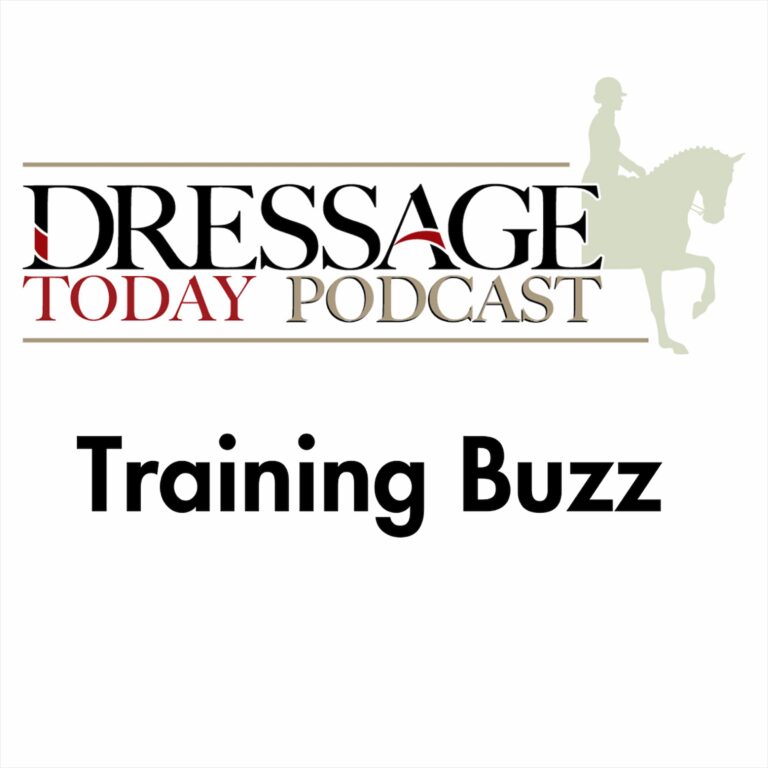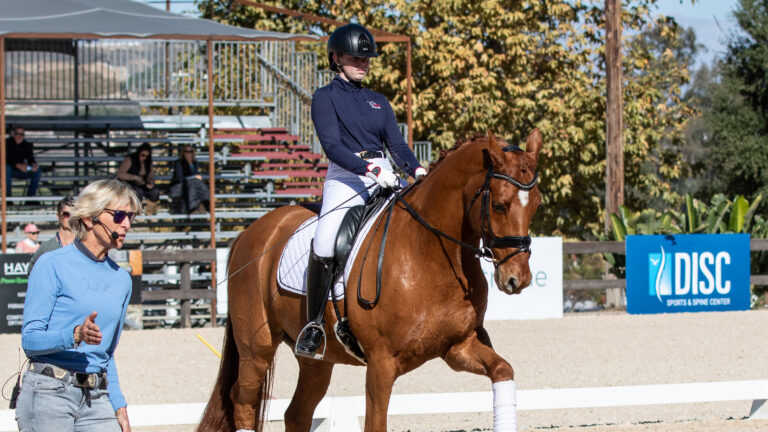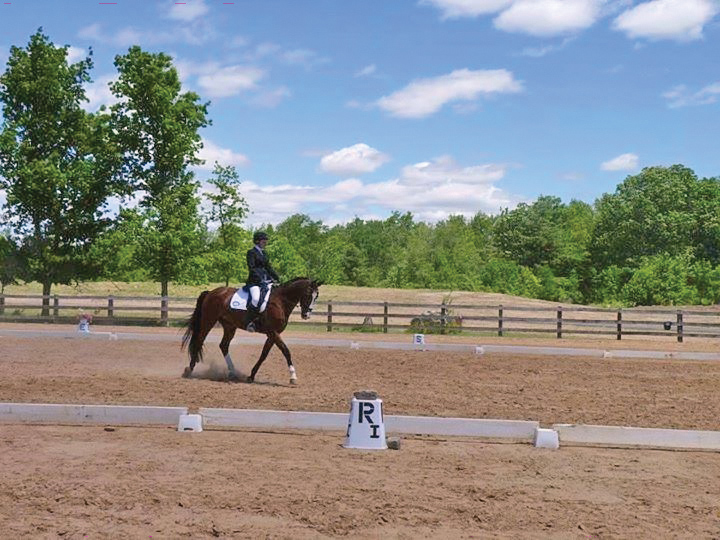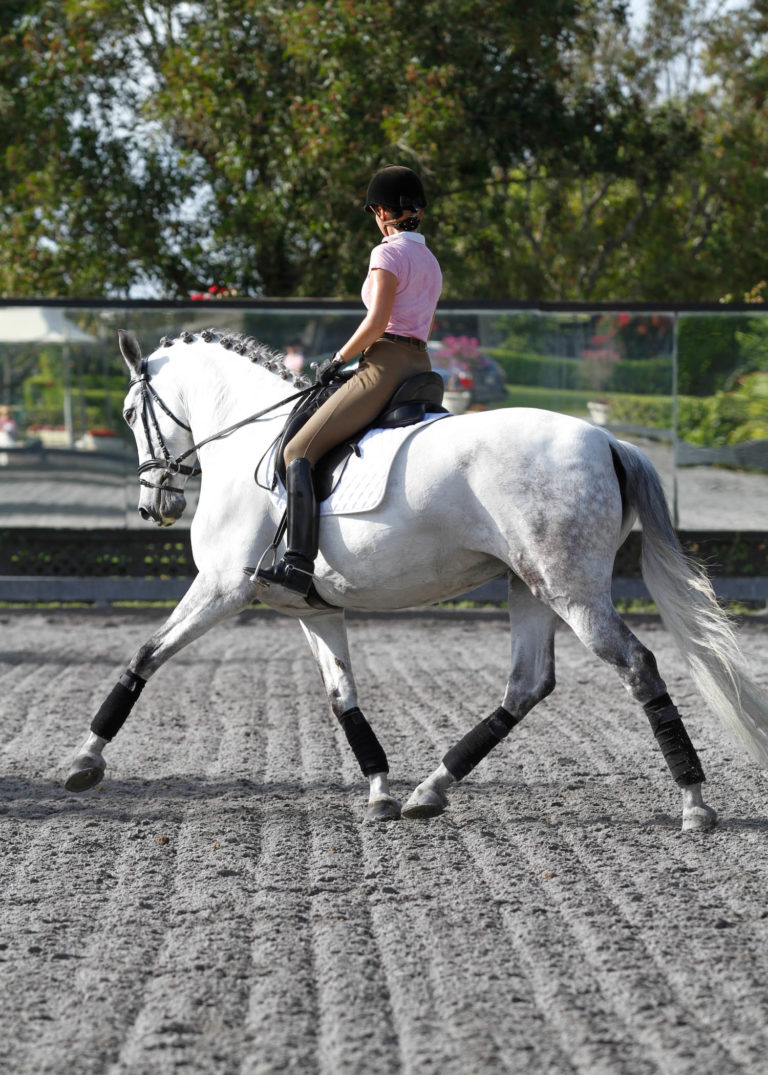Q: I’ve heard that lateral movements are a great way to calm nervous horses. Could you explain what to look for and what mistakes to avoid when using lateral movements to calm down my horse at shows or at home?—Name withheld by request
A: Lateral work can help refocus a nervous horse. It can also help a horse who is anxious or anticipating. Sometimes it’s difficult to keep a horse from being tight while trying to keep him straight between both legs and both hands. Often this will cause a horse to be tight and nervous and come behind the aids. It can also make the horse short in his neck and tight in his striding. Taking a tight horse sideways will help him become more supple and engaged and will therefore create a better connection between the inside leg and outside hand. It also will help the horse change his focus.
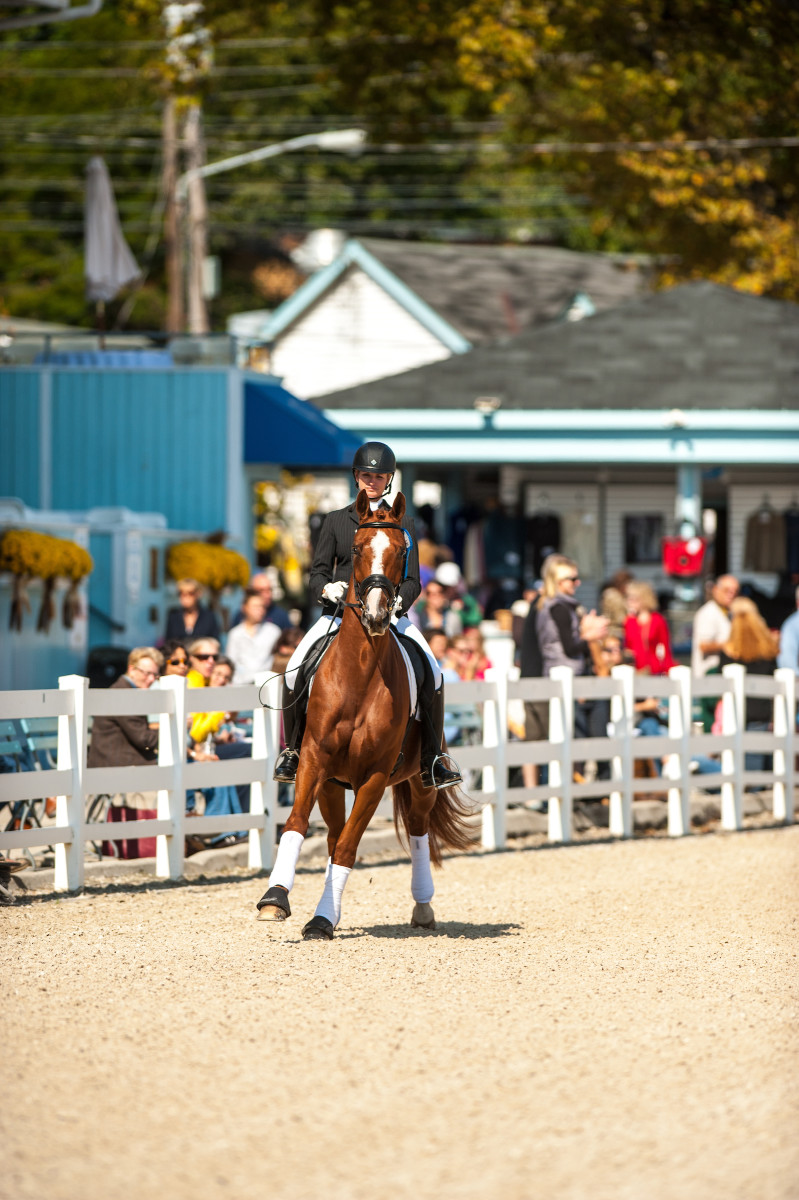
A common example of how taking the horse laterally can help relieve anticipation and tension is by leg yielding in the transitions from walk to trot or canter. You can’t blame a horse for being anxious when you gather your reins in the walk because that usually means you’re going to do something (walk, trot, canter, piaffe, etc.). Many horses will jig or lose the regularity of the walk. By taking the horse laterally, you will diffuse most his tension, resulting in a more relaxed walk. You can also apply this technique to any gait, such as a short, tight, quick trot or an irregular and tight canter.
I’ve achieved great results by riding horses haunches-in and half pass when their canter is tight. If a horse is spooking, taking him laterally (e.g., flexing away from what he’s spooking at while pushing his body toward what he’s spooking at) can help you guide him past something scary.
The shoulder-in is the most common lateral movement I use when a horse is tense. But I’ve also had success using haunches-in. I often use leg yields for spooking issues as well. Just keep an open mind and see what works best with your horse.
When trying to ride a shoulder-in correctly, a common problem is that it turns into some kind of leg yield. This happens when you lose your inside leg and outside rein connection and the horse’s outside shoulder falls out. It is most evident while schooling shoulder-in on a circle. When this happens, your horse will not come better on the aids but will lose the engagement of his inside hind leg.
Another problem is when you ask your horse to go too much sideways. If this happens, your horse’s balance will be compromised and he will have trouble going forward. It’s important to understand the mechanics of each lateral movement and the aids necessary to achieve it. This will help keep you on the right track.
Also keep in mind that the transitions are the tattletales of whether or not the horse is truly on the aids. Sometimes we think all is going well while we are riding and the horse seems to be on the aids. Then we ride a transition, and suddenly it all falls apart. I always encourage my students to keep a lateral feel in all transitions—up or down or within the gaits. This will help keep your horse engaged and on the aids.

Stacey Hastings is a USDF Certified Instructor from Training Level through FEI-B as well as a USDF bronze, silver and gold medalist. She has brought numerous horses and riders through the FEI levels. Visit staceyhastingsdressage.com.


